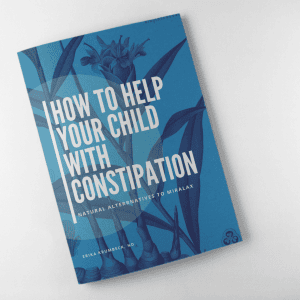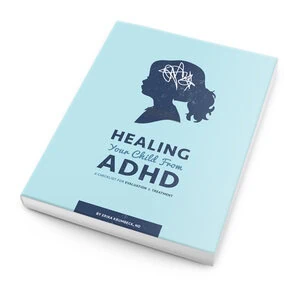Warning signs of Sensory Processing Disorders in children
Sensory processing is a term that describes how we receive information from our environment. Sensations, such as hearing and sight, provide us with information about our body and environment. Sensory integration is a term to describe the way our nervous system organizes these sensations in order for us to interact effectively with the world around us. This unconscious process is critical for development of skill and learning. It can be as basic as turning our head toward a sound or as complex as organizing information from our touch, visual and proprioceptive (body position and force) systems to tie our shoelaces. Integration of sensation takes place within the central nervous system, which is make up of our brain and spinal cord.
Our sensory system is made up eight separate, yet integrated systems. These include the 5 commonly known systems which are sight, touch, taste, smell, and hearing. There are three less known systems. These include the proprioceptive, vestibular, and interoceptive systems. Our proprioceptive system consists of receptors in our muscles and joints that respond to muscle stretch or contraction as well as bending, pulling or compression of joints. This system provides us with information our body’s position in space and movement of our joints and muscles. The vestibular system is composed of receptors within the ears, which allows us to “sense” the force of gravity and movement in space. This system is important for balance and coordination. Interoceptors are internal sensors that tell us information about our internal organs including huger, thirst, and/or elimination. They are important in regulating respiration and heart rate. Sensory receptors within each of these systems send information to our central nervous system, which is made up of the brain and spinal cord.
Ayres, a pioneer in sensory integration theory, found that the central nervous system (CNS) continuously organizes countless bits of sensory information from our sensory organs into a whole integrated experience. Sensations create electrical impulses in sensory receptors throughout our body, which are transmitted to the brain. These electrical impulses are then organized within our brain to create meaning. Through this process we develop perceptions and respond appropriately to environmental stimuli. Sensory integration is crucial for learning, participation, function and well-being. Sensory processing disorder (SPD) occurs with an individual as difficulty interpreting, processing, and regulating from one or more sensory system.
Sensory processing disorder impacts both children and adults. These individuals have intact sensory systems; however, they cannot organize the information within their brain as it is either poorly interpreted, detected or modulated. These atypical responses to sensations lead to challenges with coordination, learning difficulties, and behavioral issues. Individuals with sensory processing disorder display a wide variety of symptoms and patterns. These can manifest as sensitivities or avoidance of sensations (over-responsive) as well as decreased awareness or sensation seeking behavior (under-responsive). Some will demonstrate both patterns within a system. For example, within the tactile system, an individual can display sensitivity to input (i.e. clothing textures) yet show limited awareness in other areas (i.e. pain/temperature).
The following are a few of the signs and symptoms of SPD. It is important to discuss any concerns with your/ your child’s physician and an occupational therapist to determine need for intervention.
Auditory
- Avoids or behavior deteriorates in noisy settings
- Has difficulty responding to what you say even though hearing is normal
- Holds hands over ears or startles easily to sounds
- Difficulty attending or functioning with background noise (fan, appliance, etc.)
Tactile
- Fights or is uncomfortable with grooming tasks (hair, teeth, bathing)
- Sensitivity to fabrics and avoids certain clothing (socks, seems/tags in clothing, etc.)
- Responses aggressively or emotionally to touch
- Avoids messy play and certain textures (sand, grass, paints, food on hands, etc.)
- Seeks out feeling textures
- Touches people/objects to point of irritating others
Visual
- Expresses discomfort by light (squints, covers eyes)
- Frequent headaches
- Becomes frustrated when trying to find objects in competing backgrounds (cluttered drawer, room, etc.)
- Frequently stares at spinning and moving objects
Oral/Olfactory
- Mouths objects and clothing (when not developmentally appropriate)
- Refuses to try new foods and limits foods based on texture, temperature, taste
- Shows strong preference for certain smells
- Unable to tolerate smells that other’s do no find offensive
- Does not seem to notice strong odors
Vestibular/Proprioceptive
- Becomes anxious or distressed when feet leave the ground
- Avoids playground equipment or moving toys
- Seeks out all kinds of movement; always “on the go”
- Rocks in desk or chair
- Gets lost easily in familiar places
- Takes excessive risks during play that compromise personal safety
- Appears clumsy or accident prone
- Avoids uneven surfaces and hesitates going up/down curbs or stairs
The exact cause of SPD has not been identified, but early research suggests that it may be inherited and is present in 5-16 percent of children. There is no medical test to diagnose SPD. Due to the high variability in how these symptoms are expressed within an individual, sensory processing disorder is evaluated by a trained occupational therapy clinician.
During an occupational therapy evaluation, therapist may use formal questionnaires as well as client/caregiver interview to assist in determining symptoms that are creating barriers to function. Children are often initially referred to occupational therapy due to challenges in school (reading, writing, attending, organization), delays in development, or due to concerns with emotional regulation and behavior. Occupational therapists, using a sensory integrative approach, provide sensory rich environments to foster appropriate responses to sensation through play and movement. By providing the child with a “just right challenge” the goal of therapy is to strengthen and integrate pathways within the brain in order to support participation in meaningful activities.
- Product on sale
 How to Help Your Child with Constipation – Natural Alternatives to Miralax (E-book)Original price was: $25.00.$15.00Current price is: $15.00.
How to Help Your Child with Constipation – Natural Alternatives to Miralax (E-book)Original price was: $25.00.$15.00Current price is: $15.00. - Product on sale
 Healing your child from ADHD (E-Book)Original price was: $25.00.$15.00Current price is: $15.00.
Healing your child from ADHD (E-Book)Original price was: $25.00.$15.00Current price is: $15.00. - Product on sale
 Guilt-free, unbiased information about vaccines. Vaccines Demystified. – *Now includes RSV*Original price was: $199.00.$99.00Current price is: $99.00.
Guilt-free, unbiased information about vaccines. Vaccines Demystified. – *Now includes RSV*Original price was: $199.00.$99.00Current price is: $99.00.

